Bobcats vs lynx? It is tough to tell from any distance, even with binoculars. They are both species of wild cats and are often confused with one another due to their similar appearances.
Fortunately, bobcats have distinctive tufts of black fur on their ears and short, bobbed tails, leading to the name “bobcat” for the smaller of the two species. Bobcats are native to North America and can be found in various habitats. Lynx, however, is only found in the forests of North America, Europe, and Asia.
Despite visual similarities, bobcats and lynxes behave differently and have different diets that set them apart.
In this article, we will look at those differences in behavior and diet. We will then use them to answer the question, What is a bobcat or lynx?
Related: Bobcat hunting regulations by state.
Related: When is the best time to hunt bobcats?
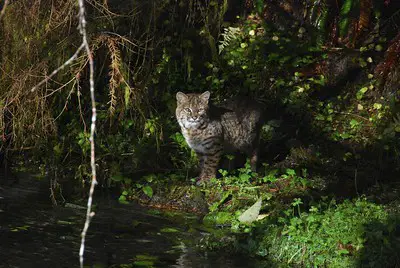
Bobcats vs lynx: Bobcats.
Bobcats are solitary animals; they live and hunt alone rather than in a group. They are skilled predators that hunt a variety of prey, including rabbits, rodents, birds, and even larger animals such as deer.
Bobcats are active day and night and are known for their excellent stalking and pouncing abilities. They are also skilled climbers and swimmers and often use these abilities to pursue their prey.
Bobcats are territorial animals, and males have larger territories than females. They mark their territories with urine and scent markings to communicate with other bobcats and establish dominance.
Bobcats are generally peaceful animals and will avoid confrontations with other animals if possible. However, they will defend their territory if necessary and may engage in aggressive behavior, such as fighting or vocalizing to deter intruders.
In addition to hunting and territorial behavior, bobcats also engage in play behavior, mainly when they are young. They will play with objects and engage in mock fights with each other to practice their hunting and defense skills. As they mature, bobcats become more independent and spend less time playing.
Overall, bobcats’ behavior is influenced by various factors, including their age, gender, and habitat.
Related: The best bobcat calling tip ever made.
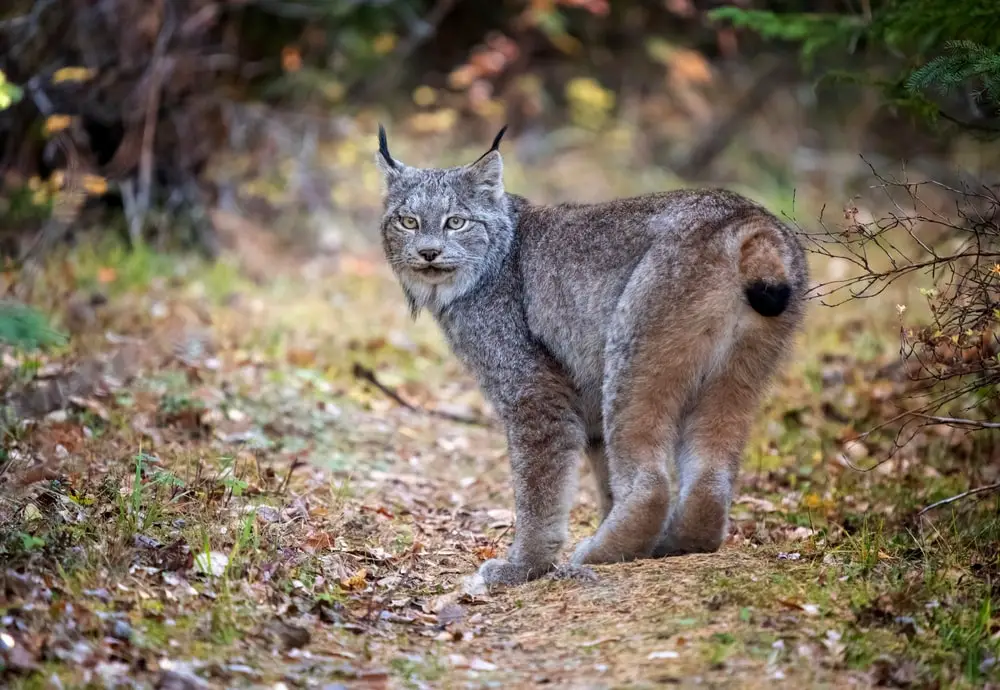
Lynx vs bobcat: Lynx.
There are four species of lynx:
- The Eurasian lynx.
- The Canadian lynx.
- The Iberian lynx.
- The bobcat (often referred to as a lynx, although it is technically a separate species).
All four species are skilled predators that hunt various prey, including rabbits, hares, rodents, and birds.
Lynx are known for their excellent stalking and pouncing abilities and often pursue their prey over long distances. They are also skilled climbers and swimmers and will use these abilities to hunt and escape predators.
Like bobcats, lynx are solitary animals, and males have larger territories than females. They mark their territories with urine and scent markings to communicate with other lynxes and establish dominance.
Lynx are typically peace-loving creatures, often deciding to avoid clashes with other animals if feasible. Nevertheless, they can be territorial and will not hesitate to deliver a resounding statement in defense of their domain – whether that is through fighting or through vocalizing dauntingly loud noises towards any would-be intruders.
Not only do lynxes exhibit territorial and hunting behavior, but they also spend time playing in their younger years. They enjoy rolling around with trinkets or engaging in pretend battles to help them hone their predatory techniques and defensive strategies. Nevertheless, as they mature, these animals become more independent; thus playtime is less of a priority for adult lynxes compared to juveniles.
Overall, lynx’s behavior is influenced by various factors, including their age, gender, and habitat.
Canadian lynxes are usually larger than bobcats. Bobcats are generally 1.5 to 2 feet tall and weigh up to 33 pounds—with males being the larger of the two. Lynx average 2 feet tall and can weigh up to 60 pounds.
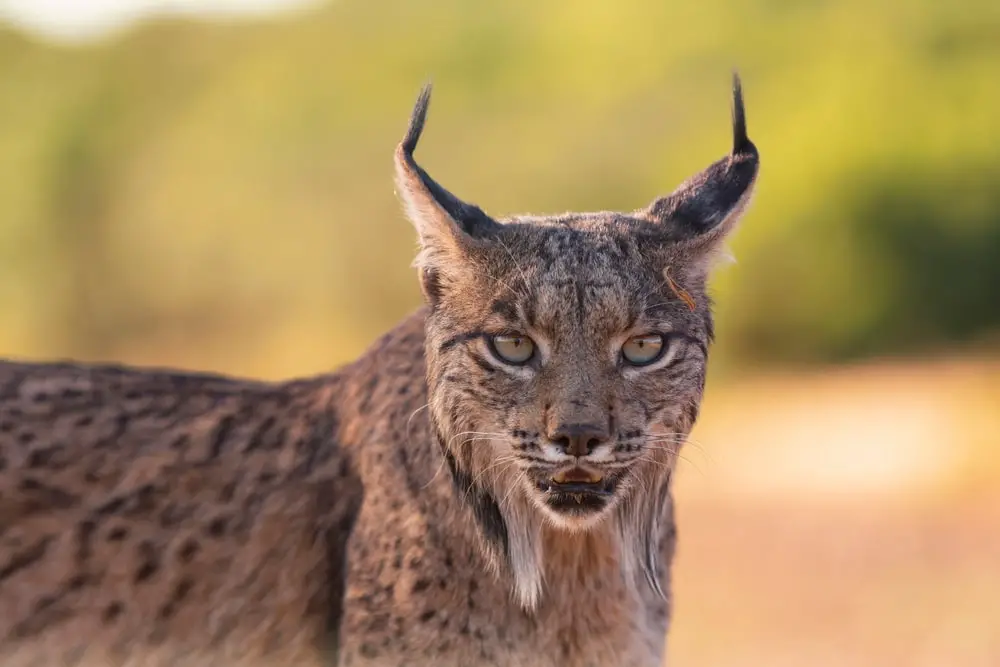
Bobcat vs Lynx: Differences in behavior.
One of the main differences is the size of their territories. Lynx have larger domains than bobcats, with males having even larger territories than females. This is likely because lynxes typically live in colder climates and have to cover a larger area to find sufficient prey.
On the other hand, Bobcats have smaller territories and are found in various habitats.
Another difference is the type of prey that each species typically hunts. For example, Bobcats hunt a wider variety of game, including rabbits, rodents, birds, and even larger animals such as deer. On the other hand, Lynx tend to focus on rabbits and hares as their primary prey.
Regarding social behavior, bobcats and Lynx are solitary animals and will generally avoid confrontations with other animals if possible. However, Lynx are generally more peaceful and will only defend their territory if necessary, while bobcats may be more prone to aggressive behavior.
While bobcats and Lynx have many similarities, significant differences in their behaviors set them apart.
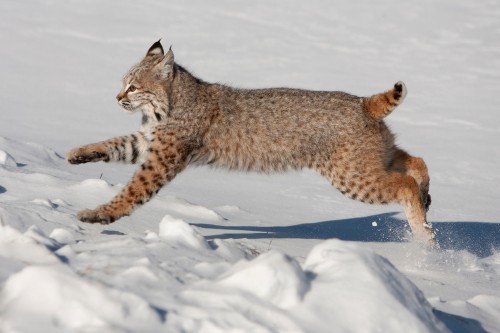
Bobcats vs Lynx: Bobcat prey hunting and foraging.
Bobcats are skilled predators that hunt various prey, including rabbits, rodents, birds, and even larger animals such as deer. They are active during the day and night and are known for their excellent stalking and pouncing abilities. They are also skilled climbers and swimmers and often use these abilities to pursue their prey.
Bobcats hunt by stalking their prey and then pouncing on it from a concealed position. They are patient hunters and will wait for the right opportunity to strike. Once they have caught their prey, they will either kill it with a bite to the neck or suffocate it by holding it down with their paws.
Bobcats will also scavenge for food if necessary and feed on carrion (dead animals) if available. They will also consume fruits and berries if they are available in their habitat.
In terms of foraging habits, bobcats will generally hunt and forage within their territories, usually around 20 square miles for males and 5 square miles for females.
They will mark their territories with urine and scent markings to communicate with other bobcats and establish dominance.
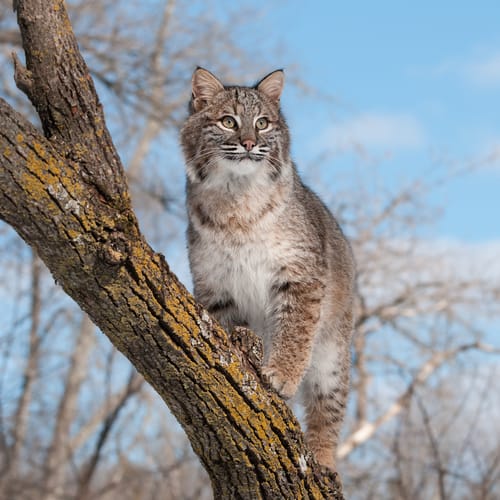
Bobcats vs Lynx: Lynx prey hunting and foraging.
Lynx tend to hunt by stalking their prey and then pouncing on it from a concealed position. They are patient hunters and will wait for the right opportunity to strike. Once they have caught their prey, they will either kill it with a bite to the neck or suffocate it by holding it down with their paws.
Lynx will also scavenge for food if necessary and feed on carrion (dead animals) if available. They will also consume fruits and berries if they are available in their habitat.
In terms of foraging habits, lynx will generally hunt and forage within their territories, ranging from 50 to 150 square miles for males and 20 to 50 square miles for females. In addition, they will mark their territories with urine and scent markings to communicate with other lynxes and establish their dominance.
Overall, the prey and foraging habits of lynx are influenced by various factors, including prey abundance, the season, and the habitat in which they live. Therefore, understanding these habits can help us understand and conserve these fascinating animals better.
How big is a lynx compared to a cat?
Lynx are far larger than house cats. A Eurasian lynx can be over four feet long and weigh more than 85 pounds.
Diet differences between a lynx and a bobcat.
One of the main differences is the type of prey that each species typically hunts. For example, bobcats pursue various games, including rabbits, rodents, birds, and even larger animals such as deer. On the other hand, Lynx tend to focus on rabbits and hares as their primary prey.
This difference in diet is likely since Lynx typically live in colder climates where rabbits and hares are more abundant.
In terms of foraging habits, bobcats and Lynx scavenge for food if necessary and will feed on carrion (dead animals) if available. They will also consume fruits and berries if they are available in their habitat.
Overall, the diets of bobcats and Lynx are influenced by various factors, including the availability of prey, the season, and the habitat in which they live. Understanding these differences in diet can help us better understand and conserve these fascinating animals.
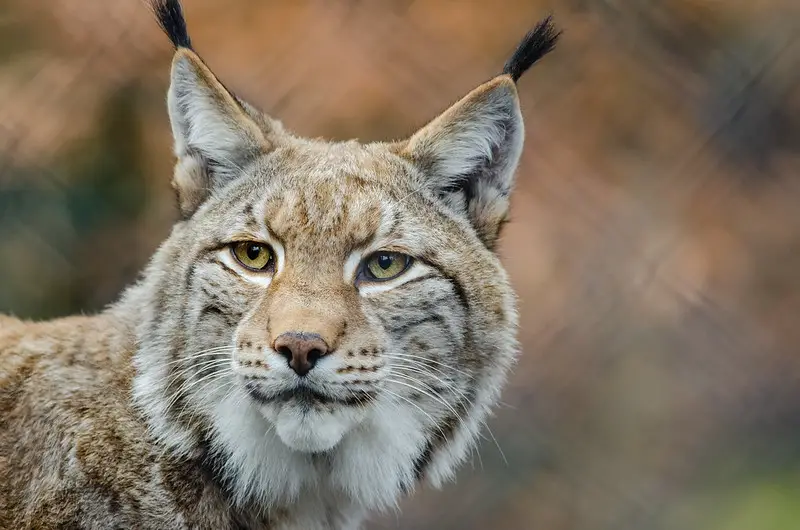
Comparing diet and behavior together: Bobcats vs Lynx.
Bobcats and Lynx are two species of wild cats that are often confused for one another due to their similar appearances. While both species are skilled predators, there are several critical differences in their behaviors and diets.
In terms of behavior, both bobcats and Lynx are solitary animals, and males have larger territories than females. However, bobcats have smaller domains than lynxes, with males having environments typically around 20 square miles and females having territories approximately 5 square miles.
Lynx, on the other hand, have larger territories, with males having territories that range from 50 to 150 square miles and females having territories that range from 20 to 50 square miles.
This difference in territory size is likely because lynxes typically live in colder climates and have to cover a larger area to find sufficient prey.
In terms of diet, bobcats hunt a wider variety of prey, including rabbits, rodents, birds, and even larger animals, such as deer. On the other hand, Lynx tend to focus on rabbits and hares as their primary prey.
Both species will scavenge for food if necessary and feed on carrion (dead animals) if available. They will also consume fruits and berries if they are available in their habitat.
While bobcats and Lynx have many similarities, significant differences in their behaviors and diets set them apart. Understanding these differences can help us better understand and conserve these fascinating animals

